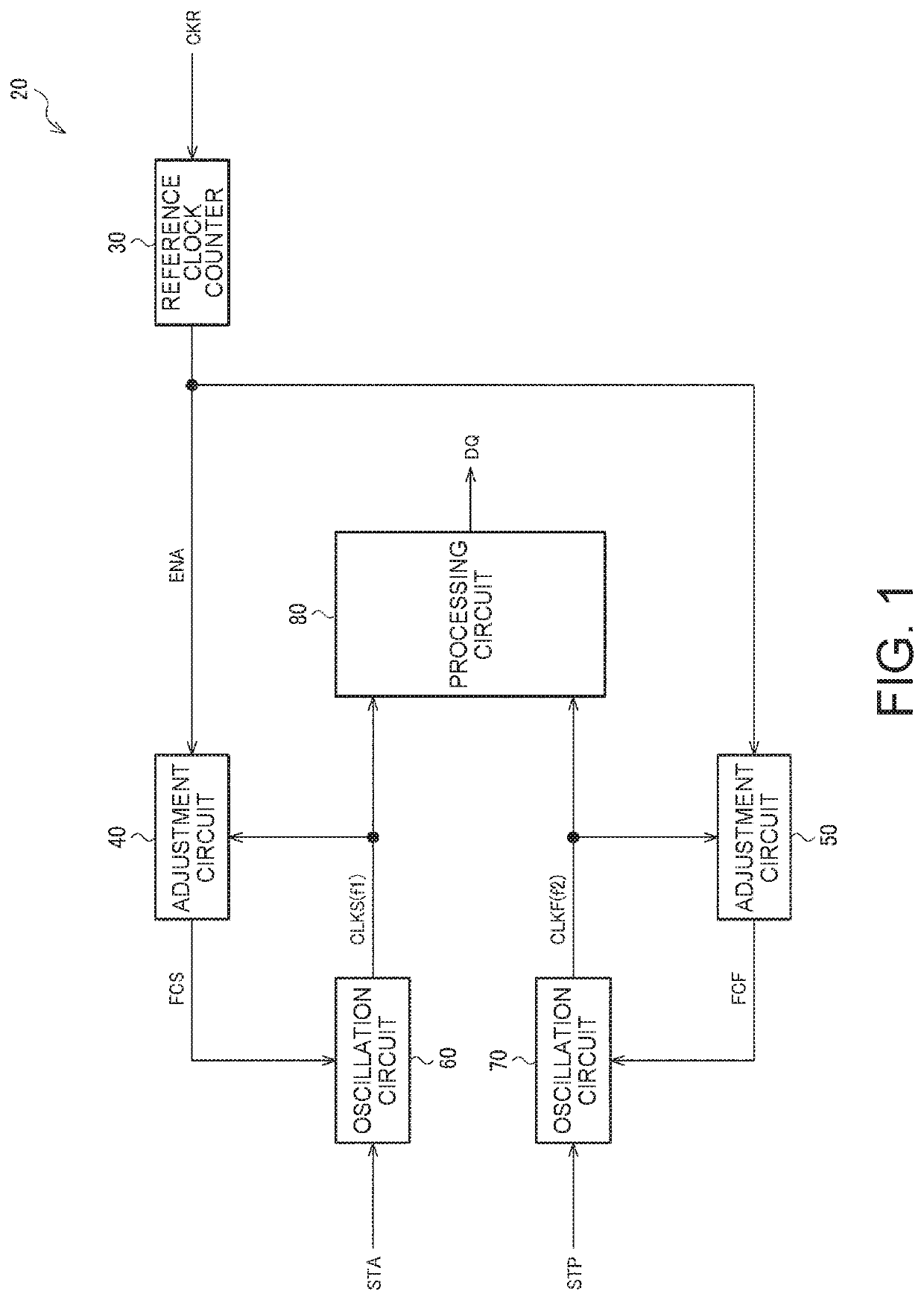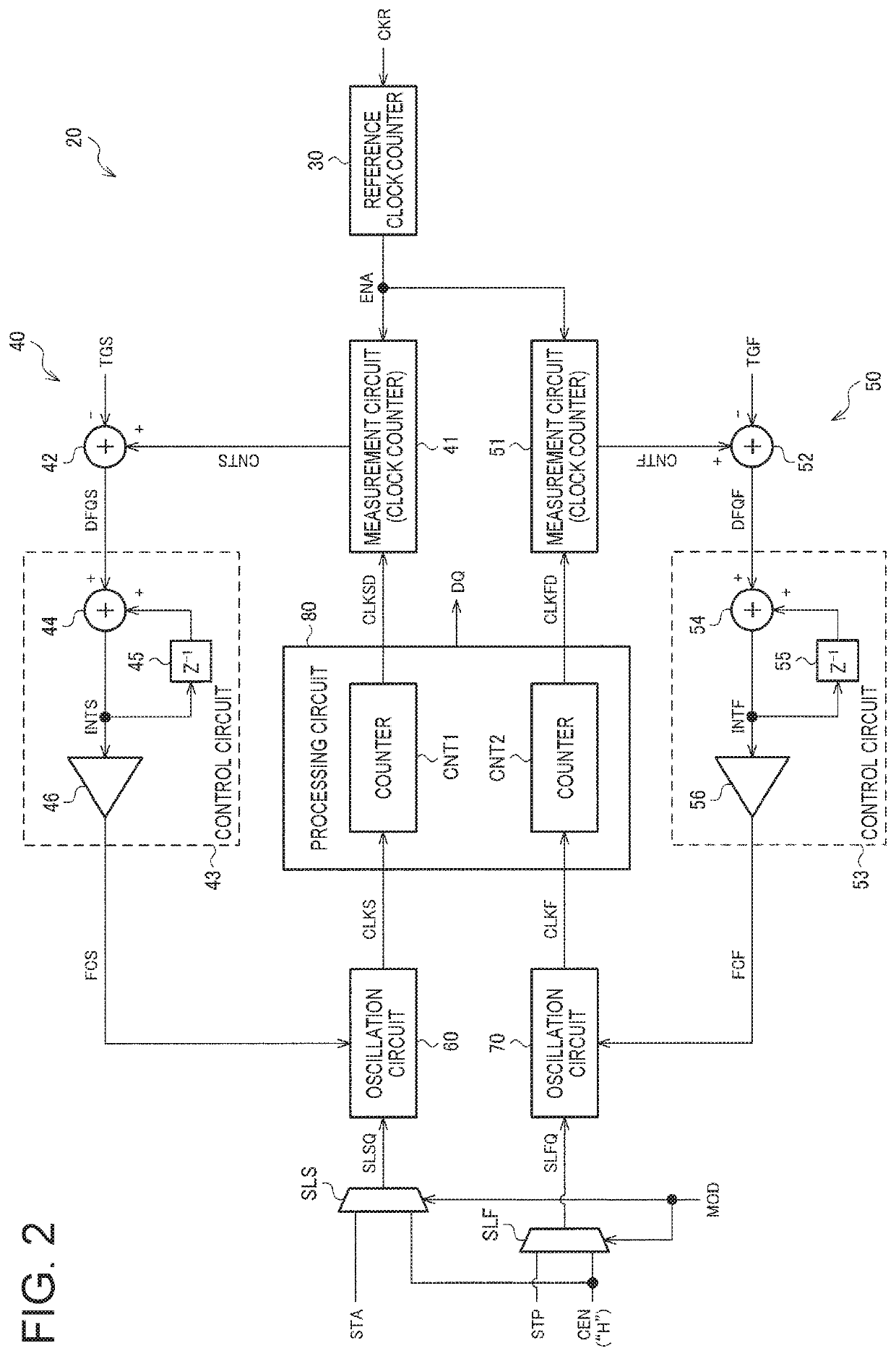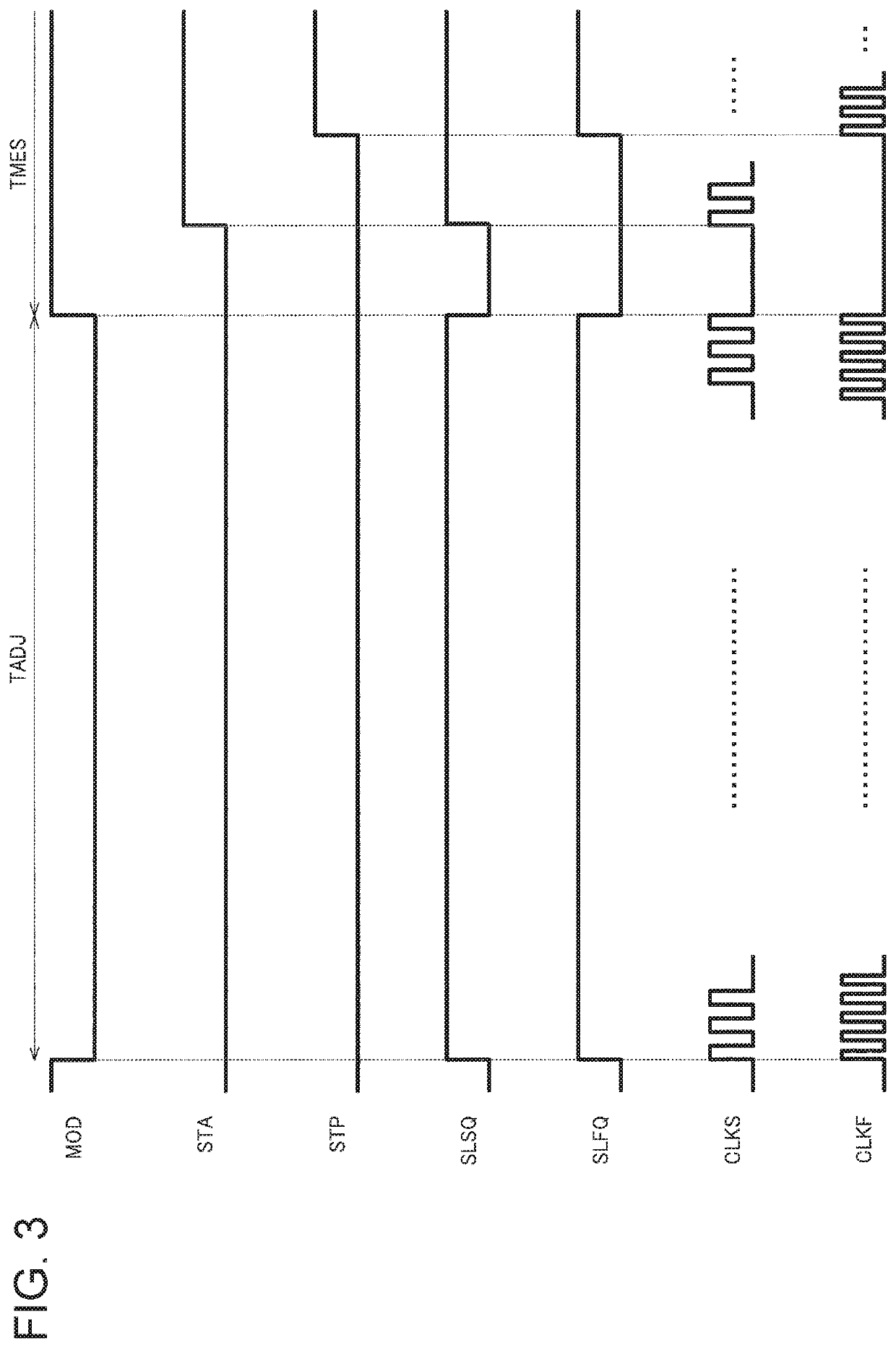Time-to-digital converter, circuit device, physical quantity measurement apparatus, electronic instrument, and vehicle
a digital converter and circuit device technology, applied in the field of time-to-digital converters, can solve the problems of insufficient time clocking accuracy in some cases, and it is difficult to start oscillation at the transition timing of the first signal (or second signal)
- Summary
- Abstract
- Description
- Claims
- Application Information
AI Technical Summary
Benefits of technology
Problems solved by technology
Method used
Image
Examples
Embodiment Construction
[0052]A preferable embodiment of the invention will be described below in detail. It is not intended that the present embodiment described below unduly limits the contents of the invention set forth in the appended claims, and all configurations described in the present embodiment are not necessarily essential as solutions provided by the invention.
1. Time-to-Digital Converter
[0053]FIG. 1 shows an example of the configuration of a time-to-digital converter according to the present embodiment. A time-to-digital converter 20 can include an oscillation circuit 60 (first oscillation circuit), an oscillation circuit 70 (second oscillation circuit), an adjustment circuit 40 (first adjustment circuit), an adjustment circuit 50 (second adjustment circuit), and a processing circuit 80. The time-to-digital converter 20 can further include a reference clock counter 30 (counter). The time-to-digital converter to which the embodiment of the invention is applied does not necessarily have the conf...
PUM
 Login to View More
Login to View More Abstract
Description
Claims
Application Information
 Login to View More
Login to View More - R&D
- Intellectual Property
- Life Sciences
- Materials
- Tech Scout
- Unparalleled Data Quality
- Higher Quality Content
- 60% Fewer Hallucinations
Browse by: Latest US Patents, China's latest patents, Technical Efficacy Thesaurus, Application Domain, Technology Topic, Popular Technical Reports.
© 2025 PatSnap. All rights reserved.Legal|Privacy policy|Modern Slavery Act Transparency Statement|Sitemap|About US| Contact US: help@patsnap.com



